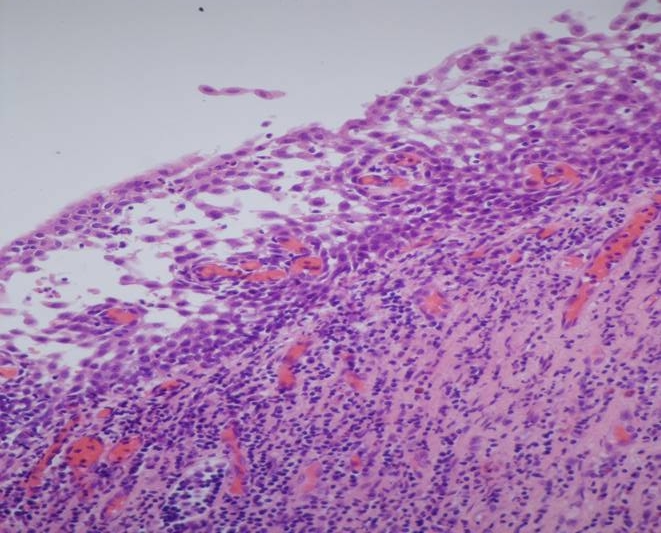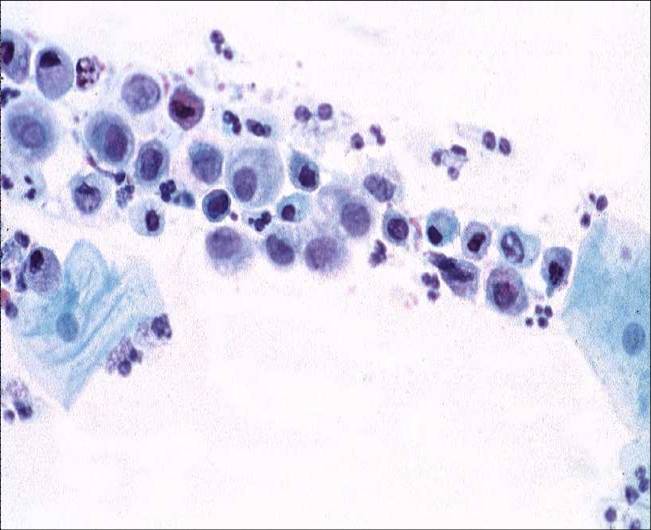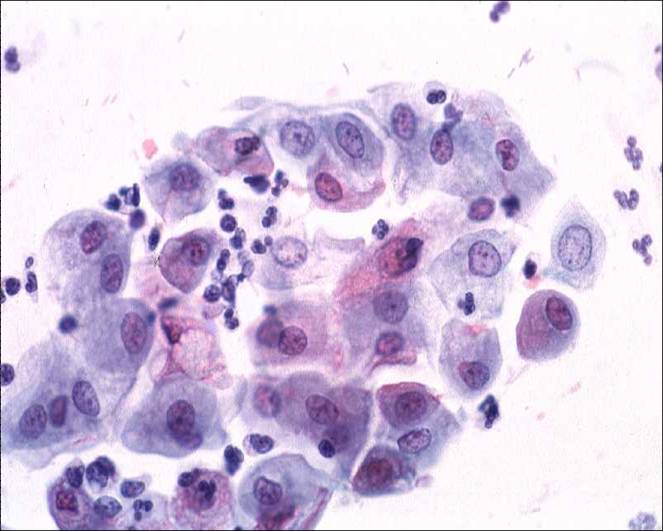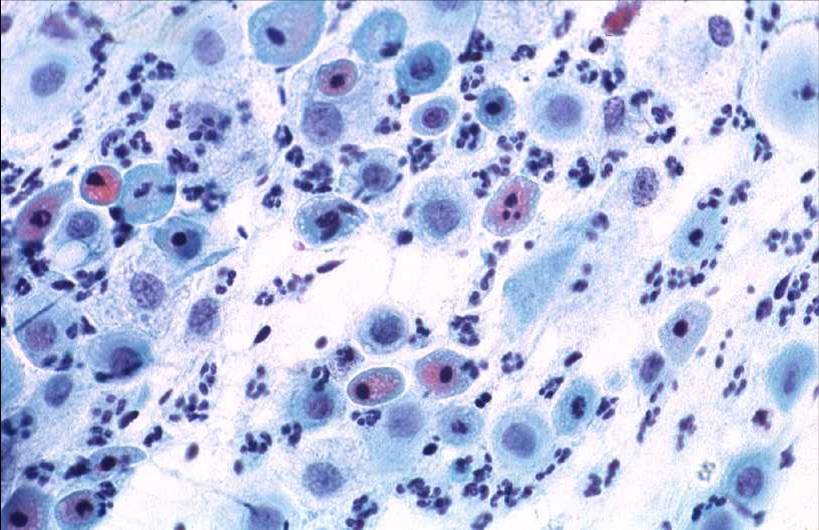

Cervical Cytology
Inflammatory changes, specific infections reaction, repair and iatrogenic changes.
| Cause and effect of injury to cervix |
| Non specific inflammatory changes |
| Specific infections |
| chronic cervicitis and folicular cervicitis |
| Regeneration and repair |
| Clinical notes |
Inflammatory changes in the cervix
Cytology of acute non specific cervicitis
The characteristic features of the smear are:



